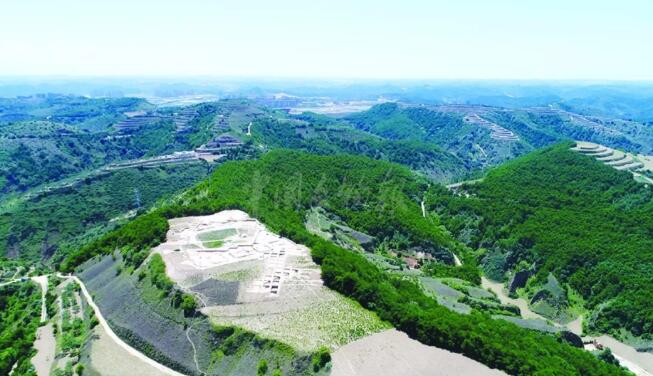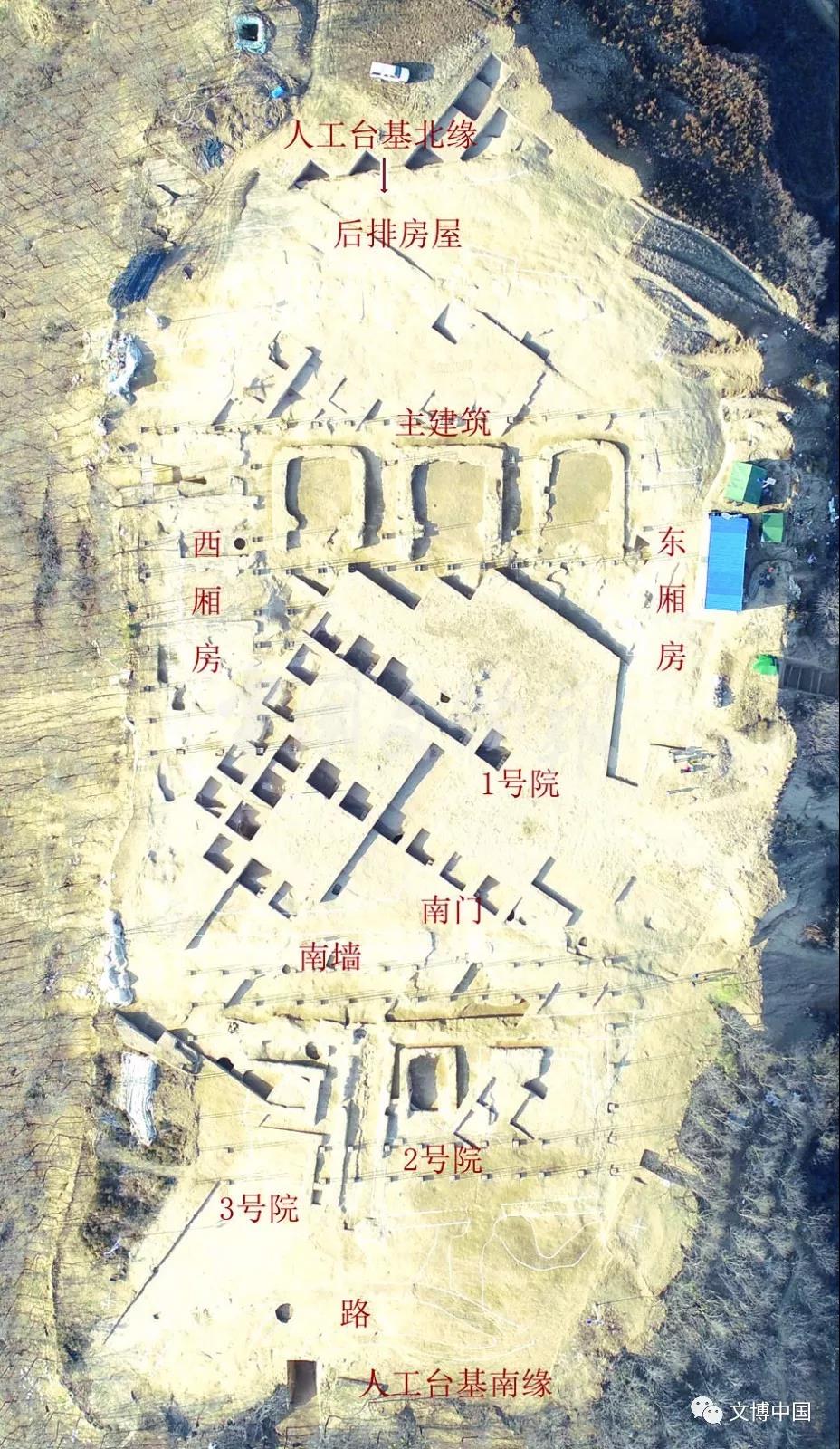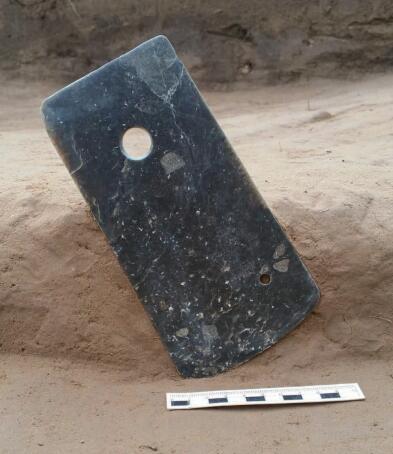Large artificial platforms and remains of several regular courtyards discovered in Lushanmao site, Shaan’xi Province
Lushanmao site is situated in Shuangtian Village, Baota District, Yan’an City, Shaan’xi Province. Since 2014, archaeological survey and prospecting of Lushanmao site have been conducted by Shaan’xi Provincial Institute of Archaeology. Over 2,000,000 square meters’ area has been recognized. More than 300 remains have been discovered, including housing foundations with white plastered floor and rammed-earth walls, ash pits, tombs and so on. There are at least 4 large rammed-earth platforms being discovered during prospecting on the top of the platform called “Dashanliang”, core area of the site. From north to south, the platforms are Zhaizimao, Xiaoyingpanliang, Eryingpanliang and Dayingpanliang in turn, on which there could have been a neatly arranged walled courts and architectural complex. Together, they are four rather separated but closely related rammed-earth walled enclosure on platforms.

Distant view of Lushanmao site
From 2016 to 2018, excavations of the platform at Dayingpanliang were carried out by Lushanmao Archaeological Team consisting of Shaan’xi Provincial Institute of Archaeology, Cultural Heritage Department of Northwest University in China and Yan’an Municipal Institute of Cultural Relics. Excavated area covered nearly 8000 square meters. According to the excavation, it’s known that there were 3 compounds on the top of Dayingpanliang artificial platform including a large compound in the north and 2 small ones in the south. Together their layout is in the shape of Chinese Character “品”. These buildings might start to build during the late period of the second phase of Miaodigou Culture because representative potteries from them are jia-wine vessels with single handle, jia- wine vessels with double handles, urns with a ring foot, jars with straight walls and etc. And they were probable in use until the end of Longshan period.

Three courtyards on Dayingpanliang platform
Dayingpanliang artificial platform is about 160m long from south to north and 100m wide from east to west. Three courts on the top were all enclosed by rammed walls in residual height from 0.1 to 0.6 meters. So far, No.1 Compound of Dayingpanliang is a two-countyard quadrangle compound, facing south. There are 3 main buildings in slightly north side of the middle of the courtyard, all facing south. Each building covers more than 200 square meters. The courtyard divides into front yard and back yard by main buildings. A north-south road is in the center of the front yard, connecting alley to the south gate and the main hall, which is the main road of the compound. There are low-lying places on both sides of the main road which could be used to gather and drain off waters from front yard.
Two separate small compounds (in excavation) are found symmetrically on both sides of the alley outside south wall of No.1 Compound, named as No.2 and No.3 Courtyards respectively. Each small courtyard covers about 700 square meters. They might be areas for security. There are several rammed-earth housing foundations in each small compound. The sizes of buildings are about 60-90 square meters with their door facing south or west, which may indicate different directions of security guards.

House foudation F4
In the south end of Dayingpanliang, there is a small-sized square used as main pass from the Yingpanliang Palace compound to the places in the southern part of the site such as Majiawa and so on. This platform is multi-steps terracing, which looks pretty like Mesoamerican pyramids. Besides, there is a flat area on the top of the hill outside rammed-earth cliff on the northern edge of Dayingpanliang platform. North square in the periphery of palace area and other related ritual facilities are probable situated on that flat area. From the results of prospection, there might be an aristocratic cemetery. However, excavations are needed in order to find more concrete information in future.

Urn burial
Pig jawbones and jade artifacts used as sacrifices of foundations were uncovered for several times in rammed earth layers of large housing foundations, courtyard walls and squares. In the deposits of large housing foundations, there are more than 100 pieces of semi-circular tiles and grooved plate tiles. Besides, there are residues of white plasters in the side part of walls outside doorway. On the plasters of the walls, there are black-red colored wall paintings. This situation is quite similar with those found in Neolithic settlement such as Shimao and Houzhaizimao.

Jade axe Yue
From all points of view, we can see that layouts of royal palace or ancestral temples in capital settlement from late Longshan Culture to Xia-Shang-Zhou Dynasties are very close to that of palace compound of Dayingpanliang in Lushanmao site. They are all strictly planned quadrangles. Though their construction times are more than a thousand years apart, they probable have quite closely inherited relationships. Several artificial platforms and compounds built in core area of Lushanmao site may be regarded as the prototype for ancient Chinese royal palaces, which play an un-replaceable role in research on the transformation of ancient settlements and early ritual systems in China. What’s more, they are also important materials for exploring social complexity trajectories and the origins of states in China. (Translator: Ma Huanhuan)

